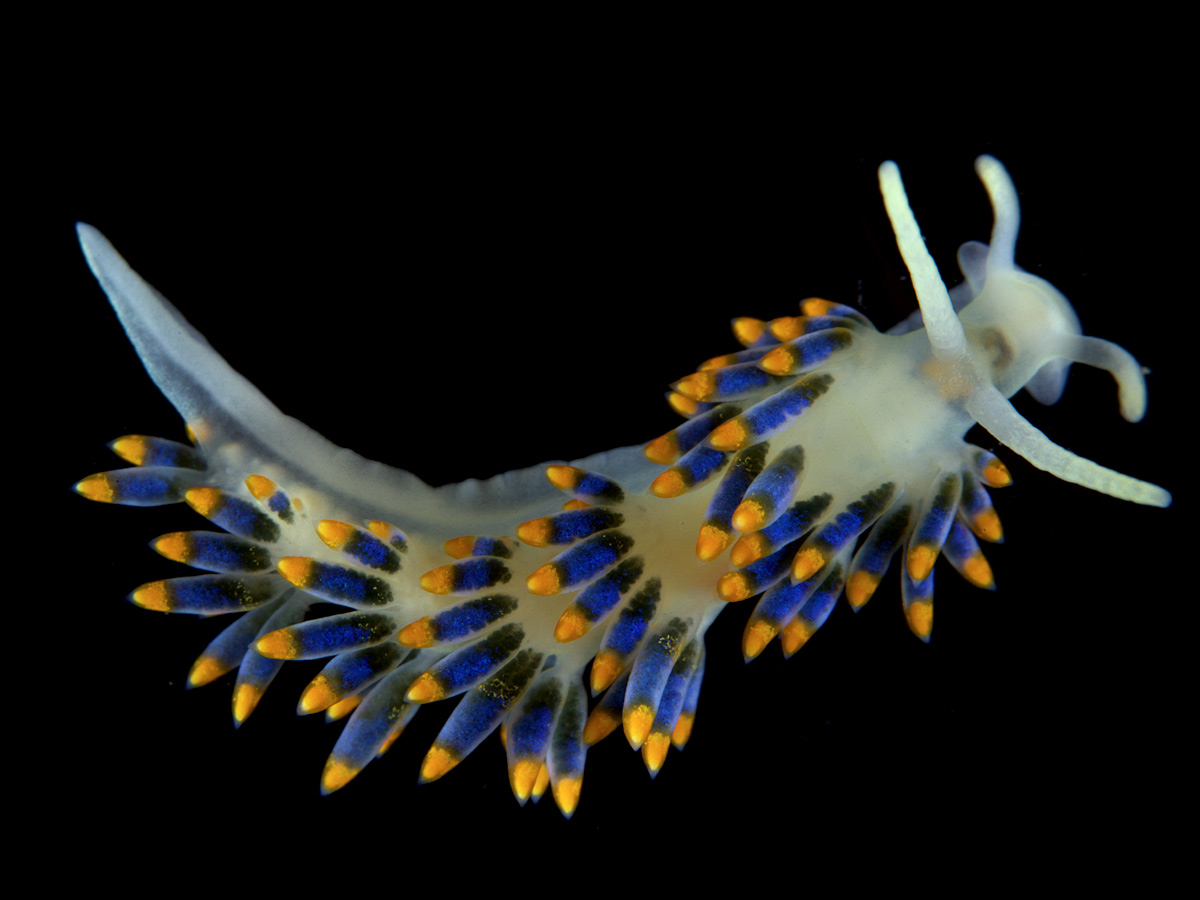Trinchesia Caerulea on:
[Wikipedia]
[Google]
[Amazon]
''Trinchesia caerulea'' is a
''Trinchesia caerulea''.
n/nowiki> Encyclopedia of Marine Life of Britain and Ireland. Rudman, W.B., 2000 (May 20
''Cuthona caerulea'' (Montagu, 1804).
n/nowiki> Sea Slug Forum. Australian Museum, Sydney.

species
In biology, a species is the basic unit of classification and a taxonomic rank of an organism, as well as a unit of biodiversity. A species is often defined as the largest group of organisms in which any two individuals of the appropriate s ...
of sea slug
Sea slug is a common name for some marine invertebrates with varying levels of resemblance to terrestrial slugs. Most creatures known as sea slugs are gastropods, i.e. they are sea snails (marine gastropod mollusks) that over evolutionary t ...
, an aeolid nudibranch
Nudibranchs () are a group of soft-bodied marine gastropod molluscs which shed their shells after their larval stage. They are noted for their often extraordinary colours and striking forms, and they have been given colourful nicknames to matc ...
, a marine
Marine is an adjective meaning of or pertaining to the sea or ocean.
Marine or marines may refer to:
Ocean
* Maritime (disambiguation)
* Marine art
* Marine biology
* Marine debris
* Marine habitats
* Marine life
* Marine pollution
Military
* ...
gastropod
The gastropods (), commonly known as snails and slugs, belong to a large taxonomic class of invertebrates within the phylum Mollusca called Gastropoda ().
This class comprises snails and slugs from saltwater, from freshwater, and from land. T ...
mollusc
Mollusca is the second-largest phylum of invertebrate animals after the Arthropoda, the members of which are known as molluscs or mollusks (). Around 85,000 extant species of molluscs are recognized. The number of fossil species is esti ...
in the family
Family (from la, familia) is a Social group, group of people related either by consanguinity (by recognized birth) or Affinity (law), affinity (by marriage or other relationship). The purpose of the family is to maintain the well-being of its ...
Trinchesiidae
Trinchesiidae is a family of sea slugs, aeolid nudibranchs, marine gastropod molluscs in the superfamily Fionoidea.
Taxonomic history
This family was reinstated as a result of a molecular phylogenetics study.Korshunova, T.; Martynov, A.; Picton, ...
.
Distribution
This species was described fromDevon
Devon ( , historically known as Devonshire , ) is a ceremonial and non-metropolitan county in South West England. The most populous settlement in Devon is the city of Plymouth, followed by Devon's county town, the city of Exeter. Devon is ...
, England
England is a country that is part of the United Kingdom. It shares land borders with Wales to its west and Scotland to its north. The Irish Sea lies northwest and the Celtic Sea to the southwest. It is separated from continental Europe b ...
. It has been reported from the NE Atlantic from Norway
Norway, officially the Kingdom of Norway, is a Nordic country in Northern Europe, the mainland territory of which comprises the western and northernmost portion of the Scandinavian Peninsula. The remote Arctic island of Jan Mayen and t ...
south to Portugal
Portugal, officially the Portuguese Republic ( pt, República Portuguesa, links=yes ), is a country whose mainland is located on the Iberian Peninsula of Southwestern Europe, and whose territory also includes the Atlantic archipelagos of ...
and in the Mediterranean Sea
The Mediterranean Sea is a sea connected to the Atlantic Ocean, surrounded by the Mediterranean Basin and almost completely enclosed by land: on the north by Western and Southern Europe and Anatolia, on the south by North Africa, and on the ea ...
. Records from Brazil and Florida probably represent a different species.Picton, B.E. & Morrow, C.C., 2016''Trinchesia caerulea''.
''Cuthona caerulea'' (Montagu, 1804).

Description
The typical size of this species is 10–15 mm and the maximum recorded length is 26 mm.Thompson, T.E. and Brown, G.H., 1984. Biology of Opisthobranch Molluscs, Volume II. The Ray Society. 229 pages 41 plates, 40 figuresHabitat
Found from the intertidal zone to 270 m. ''Trinchesia caerulea'' feeds on hydroids of the genus '' Sertularella''.References
External links
* {{Taxonbar, from1=Q3798443, from2=Q3007939 Trinchesiidae Gastropods described in 1804